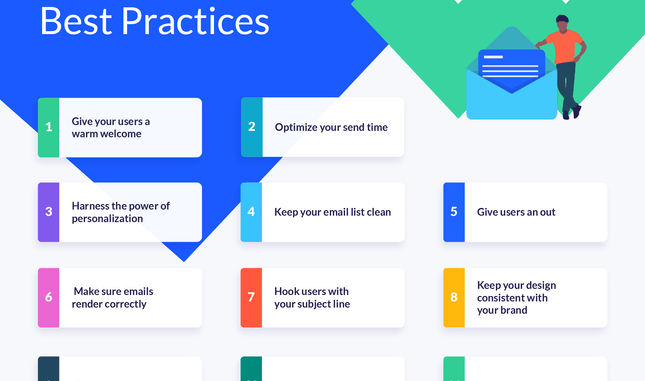
As technology continues to evolve, businesses are constantly looking for new and innovative ways to reach their target audience. One tried and true method that has stood the test of time is email marketing. Despite the rise of social media and other digital marketing tactics, email remains one of the most effective ways to engage with customers and drive conversions. In this article, we will explore the power of email marketing and best practices to help you maximize its impact on your business.
Why Email Marketing Still Matters
With the average person receiving hundreds of emails every day, you may wonder if email marketing is still relevant in today’s digital landscape. The truth is, email marketing continues to be a powerful tool for businesses of all sizes. Here are a few reasons why:
Direct communication: Email allows you to communicate directly with your audience, delivering personalized messages right to their inbox.
Cost-effective: Compared to traditional advertising methods, email marketing is a cost-effective way to reach a large number of people.
High ROI: According to industry data, email marketing consistently delivers one of the highest returns on investment of any marketing channel.
Measurable results: With email marketing platforms, you can track open rates, click-through rates, and other key metrics to measure the success of your campaigns.
Best Practices for Email Marketing Success
Now that we’ve established the importance of email marketing, let’s take a look at some best practices to help you get the most out of your campaigns:
Build a Quality Email List
Before you can start sending out email campaigns, you need to build a quality email list. Avoid purchasing email lists, as this can lead to low engagement and spam complaints. Instead, focus on growing your list organically through opt-in forms on your website, social media channels, and other marketing efforts.
Create Engaging Content
Once you have a solid email list, the next step is to create engaging content that will resonate with your audience. Personalize your emails, use eye-catching visuals, and write compelling copy that drives action. Experiment with different formats, such as newsletters, product updates, and promotional offers, to keep your subscribers interested.
Optimize for Mobile
In today’s mobile-first world, it’s essential to optimize your email campaigns for mobile devices. Make sure your emails are responsive and easy to read on smartphones and tablets. Test your campaigns on different devices and email clients to ensure a seamless user experience.
Segment Your Audience
Segmentation is key to delivering targeted and relevant content to your subscribers. Divide your email list into different segments based on criteria such as demographics, purchase history, and engagement levels. This allows you to tailor your messages to specific groups and increase the likelihood of conversions.
Monitor and Analyze Performance
Finally, it’s crucial to monitor and analyze the performance of your email campaigns to identify what’s working and what’s not. Track key metrics such as open rates, click-through rates, and conversion rates to optimize your campaigns over time. Use A/B testing to experiment with different variables and continually improve your results.
In Conclusion
Email marketing remains a powerful tool for businesses looking to connect with their customers and drive sales. By following these best practices, you can create engaging campaigns that resonate with your audience and deliver measurable results. Remember to continuously test and optimize your campaigns to stay ahead of the competition and maximize the impact of your email marketing efforts.
Are you ready to take your email marketing to the next level? Contact us today to learn how we can help you develop a winning email marketing strategy for your business.
